How do you capture a snapshot of the year in technology? It’s impossible to cover everything, especially in a market as diverse and exciting as media and entertainment, but here we cast an eye over some of 2019’s top tech moments.
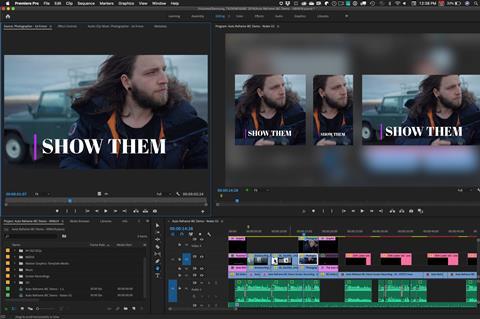
2019 saw traditional broadcasters and OTT streamers alike pushing quality higher than ever across the whole production cycle. Media didn’t just go over IP and the cloud but used virtualised components and smart delivery too. Environmental concerns were more in the spotlight this year, with the move towards remote production among trends that could cut the carbon cost, while data centres came under scrutiny over the rising energy demands of streaming. But did we just see incremental changes?
“I don’t think there were huge technology developments in 2019,” says Graham Sharp,
CEO of Broadcast Pix. “What we saw was the acceptance of the developments over the last few years in things such as IP, automation and remote working.”
Rowan de Pomerai, head of delivery & growth for media industry body the DPP, says 2019 was defined “more by maturing technology than by hype”.
“Overall, 2019 felt like the year that the media industry got down to business,” he says. “We saw production teams using the cloud like never before, with remote editing now practical at large scale.
Broadcasters and distributors were working hard on deploying cloud-based supply chains, componentised media workflows, and automation. Meanwhile, new and genuinely useful applications of old buzzwords like VR emerged, as the Lion King showed us what can be achieved when creatives use VR and game engines as tools for crafting a story that’ll be shown on the big screen [using the VR Virtual Production System from Magnopus]. We saw many 5G networks launched, ready to provide greater bandwidth to serve an increased demand for mobile viewing, while significant developments in video coding and low-latency delivery will help us to achieve top quality experiences in an all-IP future.
“While less buzz circled around 8K, the available library of mainstream 4K and HDR content grew significantly,” he continues. “Streaming took a leap towards centre stage, with multiple global giants opening their virtual doors.”
- Read more: 2019 review - business
OTT tech and hi-res sport
With delivery requirements by Netflix and other streamers setting the pace, 4K HDR is now the standard for shooting high-end drama. Many productions exceed that, some shooting in 8K or 6.5K and downsampling for UHD post and delivery. Expect the trend for high-res cameras to continue.
The streaming revolution wasn’t just impacting on video technology this year – most shows also aired in Dolby Atmos.
“Immersive audio is one of the most influential drivers of change in modern audio workflows,” says Greg Chin, audio product evangelist, Avid. “Some of the industry’s biggest players, like Netflix and Amazon Prime, are requesting Dolby Atmos deliverables to take their audiences’ viewing experience to the next level.
”It has therefore become an increasingly desirable component within immersive production. But, as immersive audio becomes more established, post facilities and professionals are challenged with staying ahead of the curve. Through a collaboration between Avid and Dolby, Pro Tools is making it easier to mix in Dolby Atmos, allowing post facilities and professionals to take on the most complex projects and create the most immersive listening experience.”
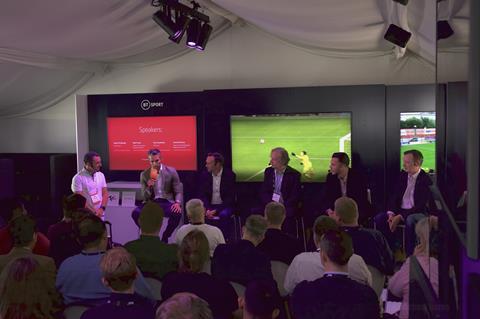
Live production, particularly in sport, is also a key driver of technology. At IBC 2019, BT Sport hosted a pioneering live 8K broadcast of a rugby match taking place in the UK, as well as the Liverpool v Newcastle United Premier League game in 4K HDR and Dolby Atmos, supported by Timeline TV and Telegenic. Looking ahead to a 2020 summer of sport for 8K
broadcasters such as NHK, Leader Electronics showcased the LV5900, an HD/4K/8K multi-standard waveform monitor at IBC, while Blackmagic Design launched the ATEM Constellation 8K, a high-end live production switcher with 8K capability.
Panasonic’s new 8K ROI (Region of Interest) multi-camera system promised to ‘change the landscape of broadcast production’ with an 8K multi-purpose camera, a processing unit and framing control software – it’s possible to crop four different HD signals or ‘virtual cameras’ from the single 8K camera wide shot.
Another tech innovation was Panasonic’s organic sensor, designed for wide camera angle shots with high resolution and a wide dynamic range. It was shown at IBC with a system featuring an Electronic Neutral Density Filter (ENDF) and Global Shutter for smoother exposure changes and shooting fast-moving images respectively.
- Read more: 2019 review – create and produce
Remote production climbs every mountain, rocks every seat
While resolutions crept steadily up, the biggest trend in live broadcast was towards remote, sometimes called ‘at-home’, production.
“Remote production creates new possibilities for broadcasters and content owners to streamline their live productions, enabling more efficient resourcing models with a positive impact on environmental sustainability,” says David Travis, chief product and technology officer, Red Bee Media.
It certainly was a big year. In February, the Stockholm facility of Sweden’s (SVT) hosted a massive remote IP production broadcast of the FIS Alpine World Ski Championships in Åre over 600 km away, while ITN Productions remotely delivered the IAAF World Relays Yokohama 2019 from the NEP Andrews Hub in Sydney, 7,800km distant. Timeline Television and Whisper Films took it further with global remote production of the SailGP season, streaming content from ships to shore all controlled and output from its Ealing Broadcast Centre.
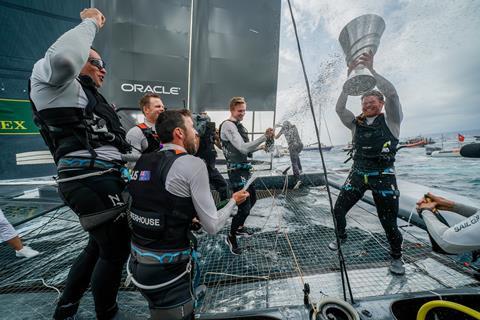
In September, IP remote production enabled the ten-day Rock in Rio event to be broadcast live from GloboSat’s production centre 15km away. Aided by technology from Lawo among others, 80Gbps optical fibre paths carried 28 1080i HD feeds and VC2-compressed 4K feeds for the video production, while an immersive Dolby Atmos audio mix was produced at Globosat’s HQ using a Lawo mc²96 production console. Grupo Globo also used the festival to carry out the first Brazilian 5G Broadcast field test broadcast over an experimental UHF channel using equipment from Rohde & Schwarz among others.
“Remote production will be facilitated by the emergence of 5G and we’re already seeing a rise in applications using our technology, in line with industry trends,” says
Samuel Wasserman, CEO, LiveU. “We’ve already seen it in our tests around the world covering events such as the NBA Summer League with AT&T and the Berlin Marathon.”
IBC 2019 saw the formation of a cross-industry task force formed within the EBU, the Media Action Group for 5G (5G-MAG), aimed at creating a convergent 5G infrastructure, including terrestrial HPHT (high power, high tower), satellite, and cellular mobile networks, to be used in a collaborative way.
Cloud thinking leads to virtualisation
While cloud-based workflows are increasingly being adopted by media companies, on-premises storage and software are still going strong.
As Margaret Craig, CEO of Signiant, says, “The industry is moving beyond a simplistic view of ‘the cloud’ as a single public cloud platform. Technical leaders now envision agile, distributed global storage and compute environments, with multiple commercial infrastructure providers and large-scale private clouds. They want to be able to choose the optimal resource configuration for each workflow or asset class, based on cost, performance, and adjacency to other services.”
Stuart Almond, head of marketing at Sony Professional Solutions Europe, views the growth of virtual, cloud-based solutions as one of the most significant developments for the industry over the past 12 months “Adoption rates have dramatically increased this year and these services are now being used by media organisations across the globe for all kinds of productions, from large-scale sporting events to independent cinema festivals.”
Almond observes that the unprecedented range of distribution platforms has prompted media organisations to look for turnkey solutions that help them “create, control, connect and deliver content anytime, anywhere”.
“At Sony, we have experienced this trend first-hand as our Intelligent Media Services division is going from strength to strength,” adds Almond. “Our advanced, cloud-based production services have, to date, collectively delivered, managed and stored many millions of hours of content. This year, we also entered into a strategic partnership with virtualised media production solutions provider Nevion, to offer media organisations even more advanced, fully integrated solutions that can help them on their digital transformation journey and increase output as well overall ROI.”
The transition towards software-defined workflows and architecture moved forward significantly during 2019. “We have seen many examples of the media industry adopting new solutions and ways of working, including Channel 4 deciding to move their playout operations into Red Bee’s software-only playout deployment,” says David Travis.
A fragmentation of platforms has prompted developers in a quest for smart delivery. For example, Globecast MCN was launched at IBC 2019 to allow multiple different feeds to be loaded into the cloud by host broadcasters in sports events, with affiliates only selecting and downloading the feeds they require, rather than the host having to deliver all feeds to all affiliates. The service also ties into the remote production trend, as it provides a way to deliver content without the need for onsite transmission logistics, with processing and management complexity handled in the cloud.
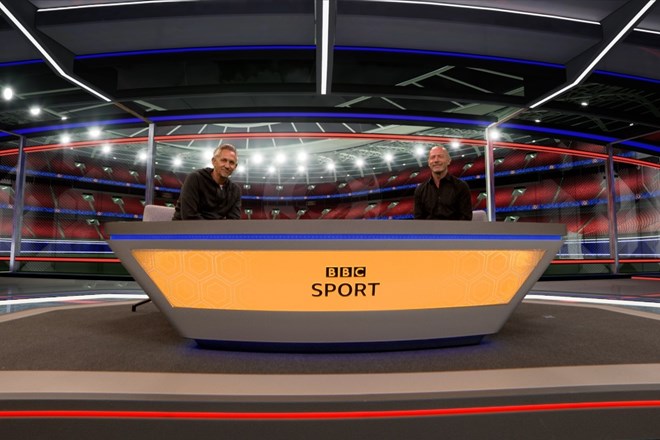
Virtual sets: MediaCityUK’s dock10 uses Zero Density’s Reality to power the 4K UHD ready virtual studio capability used by shows such as BBC Sport’s Match of the Day.
Source: BBC Sport
The number of direct-to-consumer (D2C) services increased. “One significant development for this segment is the introduction of ultra-low latency live OTT feeds (3.5 seconds), announced by Red Bee at NAB 2019, which creates the potential for delivering live content at a lower latency than traditional broadcasting feeds,” says David Travis. “This innovation has gained substantial attention in the industry and has been acknowledged through three innovation awards in the past six months.”
As the OTT subscriber base grows, streaming media services have to distribute content across more servers in more geographic regions, using multiple HTTP-based content delivery networks (CDN) for fast, buffer-free streams that meet viewers’ increasingly high standards. But a multi-CDN strategy brings with it less control, especially when it comes to quality of experience (QoE). To help content providers regain some control, Edgware used IBC 2019 to premiere StreamPilot.
- Read more: OTT tops the IBC2019 agenda
“Content providers must gain visibility into the QoE without having to go down the complex client integration route,” says Johan Bolin, CPO & CTO at Edgeware. “Our cloud-based session control platform, StreamPilot, introduces a control plane-based model that can, in real-time, select the optimal delivery on a per-segment granularity, independent of both client and CDN. Such a model can provide a new level of control when it comes to multi-CDN delivery and bring content providers back into the loop.”
Mixed messages: virtual sets get real
“Virtual studios really came of age [in 2019] says Andy Waters, head of studios at dock10. “New rendering engines running in real-time on powerful GPUs provided photoreal graphics and sets that viewers are happy to engage with, as illustrated by our new studio for BBC Match of the Day.”
Such solutions are moving towards a hybrid mixed reality, combining real sets with virtual extensions or introduce elements which would be physically or financially difficult to construct.
At the Open golf tournament in Portrush in July, Sky Sports pioneered volumetric capture to create lifelike digital replicas of golfers. Sky Scope AR offered a 360-degree view of some of the game’s superstars in Sky’s Open Zone studio. The system uses Polymotion Stage, developed by MRMC and Dimension as the world’s first mobile multi-solution volumetric capture studio.
White Light’s Smart Stage is another example of a mixed reality environment. The solution omits the need for green screens by instead utilising LED video walls, so the talent can lit properly and respond to content is ‘really there’. Media servers, such as those from disguise that power Smart Stage, also became more prevalent in 2019
“Media servers have now become part of the conversation about colour space, performing conversions on the fly whilst supporting 10-bit, uncompressed image sequences and live HDR cameras,” says Peter Kirkup, global technical solutions manager at disguise. “As the year draws to a close, it’s great to see the industry making use of these features.”
- Read more: What’s next for VR?
Post powers up, AI gets smarter, archive gets older
The world of post had to adapt to the new streaming and 4K/UHD HDR reality in 2019 with more demands for storage and real-time systems capable of working with massive amounts of data. At IBC, AJA and Colorfront unveiled the HDR Image Analyzer 12G, offering 12G-SDI connectivity and real-time 4K/UltraHD HDR monitoring and analysis for both post and live work. Avid’s Media Composer’s tackled UHD HDR, 8K or 16K, changed its UI and introduced a built-in 32-bit floating-point colour pipeline, OpenEXR decoding and IMF packaging, while Apple returned with its most powerful Mac Pro, capable of full CPU and multi-GPU accelerated 8K real-time editing, effects and colour correction in ProRes 4444.

2019 also saw postproduction experience an infusion of machine learning to streamline productivity, such as Adobe deploying Sensei, its AI and machine learning technology to accelerate manual production tasks in its post software. Content-Aware Fill in After Effects automates the process of removing visual elements like boom mics, signs, logos and people from shot footage. It makes use of optical flow and 3D tracking techniques to intelligently assemble a replacement background. For Premiere Pro, Sensei powers Auto Reframe which intelligently reframes and reformats video content for different aspect ratios, from square to vertical to cinematic 16:9 versions.
BlackMagic Design’s DaVinci Resolve 16 introduced a new Neural Engine for AI, and deep learning features such as enhanced face detection to automatically sort and organize clips, speed warp motion estimation for retiming, super scale for up-scaling footage, auto colour and colour matching.
AI wasn’t only found in post. The Media-Telecom Catalyst saw global industry association TM Forum and IBC collaborate to bring proof of concept projects to IBC2019, such as AI indexing for regulatory content management, and mobile newsgathering using AI-powered compression. Meanwhile, Samsung Research has developed AI ScaleNet, a codec to compress 8K content to 4K quality using an AI downscaler, then transmit it to the user’s 8K TV, again using AI to upscale the content back to 8K quality.
But while we talk about the future, don’t forget about the past. Lance Podell, SVP and GM of Iron Mountain Entertainment Services (IMES) says sophisticated managed digital archive systems have taken on “a newfound importance in 2019 – a trend which will only accelerate as data visibility and security concerns become more prevalent in the months to come”. Highlighting IMES’ Digital Content Repository, which saw its first IBC appearance this year, he says such platforms enable “instant data search, preview and retrieval, enabling businesses to focus on preserving their past and maximising the value of their media assets”.
Topics
- 5G
- 8K
- Artificial Intelligence
- CDN
- Compression/Codecs
- Content Transcoding
- Digital Transformation
- Features
- Graphics & Branding
- High Dynamic Range (HDR)
- IP and Cloud
- Manage
- Media Asset Management
- Media Transport
- Metadata
- Mobile
- OTT
- Playout
- Systems Integration
- Systems Integration
- Test & Measurement
- Trends
- Ultra HD
- Virtual Reality












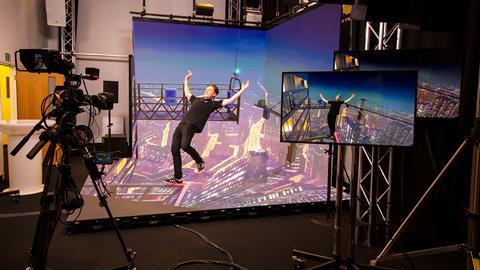












No comments yet